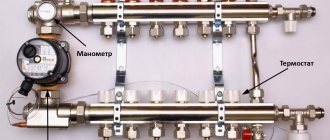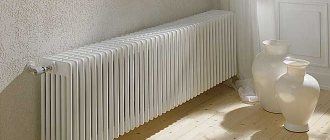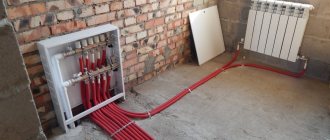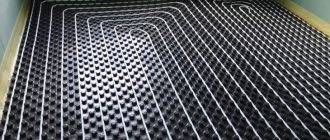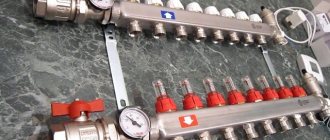A warm floor in an apartment makes it more comfortable and cozy, but a permit must be obtained for the installation of such structures.
There are two types of heated floors - electric and water. The installation of any type of such heating is equivalent to redevelopment, which can affect the climate of the neighbors. Warm electric floors can cause power surges in neighboring apartments, and water heated floors reduce the temperature in neighbors' radiators. Of course, the housing inspection, called by the residents, will immediately make claims against the owners of such floors, even if they are not to blame for the decrease in power or temperature, but without permission this threatens with dismantling and a fine. In order not to cause unnecessary troubles and troubles to yourself and your neighbors, you must first coordinate the installation of heated floors with the relevant authorities.
Is it possible to make water floors in an apartment?
The legislation strictly punishes anyone who makes changes to the central heating system of an apartment building. Independently connecting a water heated floor in an apartment is fraught with sanctions, court decisions, fines, etc.
The reason for the lawsuit is usually flooded neighbors downstairs. Therefore, before installing a water heated floor in an apartment with your own hands or with the help of hired builders, you must first calculate all the advantages and disadvantages of the solution, take into account possible risks and negative consequences.
According to SNiP, it is possible to make changes to the heating system of the apartment, subject to coordination of the modification with representatives of housing and communal services and the Heating Network. In practice, this is only possible in the case of autonomous heating provided for in the design documentation.
Legal methods for installing water floors
To obtain permission to install a water floor, an expert opinion will be required. The document must confirm that the circuit will not affect or increase the load on the utility lines of the apartment building. Permission can be obtained if the house has floor-to-floor heating distribution and there are no usual risers. In this case, the owner may be required to additionally install an individual heat meter and control valves. You can make water floors in other legal ways:
- install a water circuit instead of radiators in agreement with the energy supervision service and heating networks;
- install a warm circuit on the bathroom floor instead of a heated towel rail;
- In apartments on the first floors, heated floors can be connected to the heating return riser.
What is needed for a water floor in an apartment
Decoration - the reasons why underfloor heating is prohibited in apartments are as follows:
First reason: According to housing standards, it is not allowed to increase the heating power in an apartment when replacing radiators or making changes to the central heating pipeline.
This standard is made in order to maintain the coolant temperature level within normal limits for each room in the house. Any changes associated with an increase in energy costs are unacceptable. Therefore, it is prohibited to install water heated floors in an apartment with central heating.
You can bypass this norm if, after installing the water circuit, the total thermal power remains the same. And for this you will have to reduce the number of radiators, which is not always practical.
Second reason: It is forbidden to lay due to possible leakage of the circuit. You will have to draw up a project of work and prove that if the integrity of the pipe is damaged, the likelihood that the water will ruin the housing of the neighbors below is negligible.
To legalize the installation and use of water floor heating in an apartment, you will have to use high-quality waterproofing and make a project with the materials specified in it. It may be necessary to put insulating corrugation on the pipes to prevent leakage, and to comply with other heating network conditions.
The likelihood of leaks - even if the waterproofing layer is installed correctly, it is unrealistic to completely prevent the possibility that neighbors below will not be flooded due to a pipe rupture.
And since a home-made warm water floor in an apartment is a reconstruction of the living space, financial responsibility for the damage will fall entirely on the culprit of the leak.
If it is not possible to reach an agreement peacefully with the neighbors, you will have to pay compensation, including repair work, court costs, etc.
Official registration - obtaining permission is so problematic that most owners go the other way and simply install the heating system themselves, connecting the circuit without the necessary approvals. This is regarded as illegal redevelopment of the apartment. And independent changes lead to the inability to sell living space.
The only solution is to install individual heating in the apartment. In this case, you will only need to register changes in the layout in the BTI, which is much easier than resolving issues with the Heating Network.
A fine for having a water floor in an apartment is not the only punishment. The authorities legally oblige the owner to dismantle the water circuit.
What is more profitable: hot water or a water heater in an apartment? Is a water heater beneficial for you? We count
Before deciding whether you need a water heater or not, experts recommend answering several questions:
— You need to understand where the buyer will install the boiler - in a house, apartment or garden house; roughly calculate how many cubic meters of water a family spends, and don’t forget about the load on the power grid,” says Eduard Khakimov, a salesman at one of the Pervouralsk specialized stores.
So, let's take ideal (standard) conditions - a family of three or four people, daily consumption - 200 liters of hot water, that's 6 cubic meters per month. The apartment has a two-tariff electric meter. During the day and late in the evening, the family spends about 150 liters, in the evening - 50. The water heater is 100 liters, the power is small - 1.5 kW.
Let's calculate the cost of a cubic meter of hot water from a water heater for such a family:
Heating time
Calculation formula: temperature difference (60-10) * volume (100 l) * 4.2 (kJ/kg * degree - coefficient of heat capacity of water) / power (1.5 kW) = time (14000 sec)/60 = 233 minutes = approximately 4 hours
Power consumption: 1.5 kW*4 hours = 6 kW.
6 kilowatts are needed to heat 100 liters of water. For 200 liters - an average of 12 kW. Of these, 9 kW are at the daily rate - for Pervouralsk it is equal to 4.07 rubles/kW, 3 - at the night rate (1.92 rubles/kW).
The amount per day is 42 rubles 40 kopecks. Per month - 1272 rubles for electricity. Considering the cost of water - 20.06 rubles / cubic meter. m - only 1392 rubles *.
*We do not take into account the downward error that can occur due to the fact that the boiler maintains the water temperature, like a thermos, for several hours. Accordingly, it does not warm up cold water from 10 degrees every time. Taking this into account, the final amount for electricity may be lower than announced. However, keep in mind that when purchasing a boiler, you will need to pay a certain amount one-time - directly for the equipment and for its installation. We omit these numbers because they are purely individual.
How to lay pipes on the floor
The service life of a PVC water circuit does not exceed 50 years. It is strictly forbidden to use ferrous metal pipes, which will rot in the concrete floor within a few years.
Where to connect water floors
Installation features and possible errors
It is necessary to connect the water circuit in such a way that after it is turned off, the coolant continues to circulate in the central heating system.




